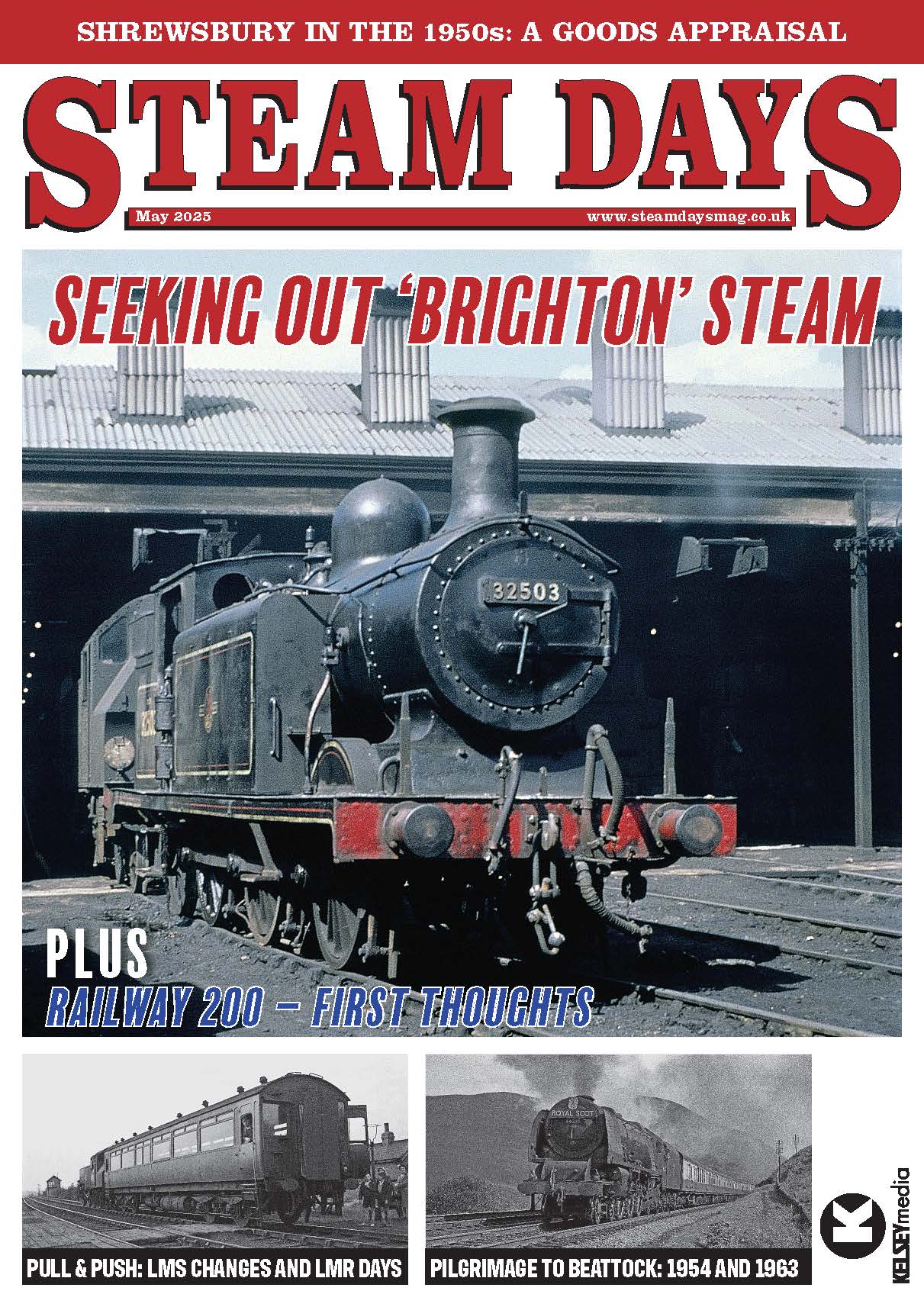Alan Barnes is a regular visitor to the North East. Here, he takes a look at the history of the Aln Valley Railway and its progress in extending one of Britain’s newest heritage lines, a project which has not had the easiest of starts.
VERY little evidence remains of the railway lines which once served the town of Alnwick, in Northumberland, and headed north to the Scottish town of Coldstream and east to Alnmouth, and a link with the East Coast Main Line.
With many of the bridges on the line having been demolished, the trackbed being ploughed, and Alnwick station, now the home to Barter Books, the well-known second-hand bookshop, the restoration of any part of the line represents a serious challenge.
Enjoy more Steams Days Magazine reading every month.
Click here to subscribe & save.
However, for the past few years the Aln Valley Railway Society has been engaged in the project to reopen a rail link between Alnwick and Alnmouth. With the old Alnwick station being virtually intact it is rather frustrating there is no possibility of it being incorporated into the restored railway because there is the small matter of the A1 dual carriageway and a missing bridge to take into account.
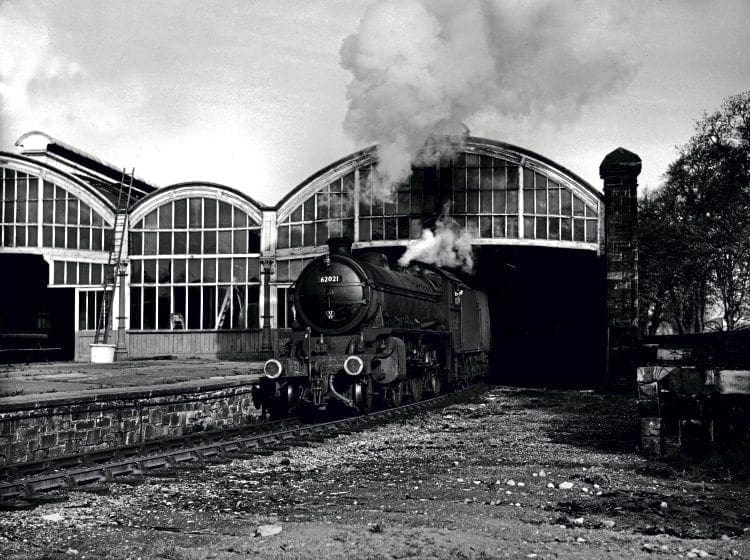
No track
I paid my first visit to the Aln Valley Railway (AVR) in February 2013, nearly a year after work had begun on what was essentially a grassy field on the outskirts of Alnwick.
For a heritage railway which had no track, no station, no trains and no passenger coaches it seems remarkable that between July and September 2012 they received just over 2,000 visitors, no doubt intrigued to see the birth of a new railway.
Since then I have returned to see the progress of the project on several occasions, usually in the company of my seven-year-old granddaughter, who has become something of an enthusiast for all things railway.
In that time the site has been transformed with the construction of a station complex and platforms, footbridge, signalbox, a goods yard, loco shed and workshops. There is also a short section of operating track, with steam- and diesel-hauled passenger services being regularly run on weekends during the summer.
The emphasis of the development work has been to create the new terminus at the ‘Lionheart’ site, which lies to the east of the town, next to the industrial park. The tracks serving the station have been laid, and last year these were extended onto the original trackbed; the first trains using the new line at Christmas.
Eventually the railway will be extended eastwards to its ultimate destination at Alnmouth. Here, a new platform will be built to serve as a connection with the main-line services that currently use Alnmouth station.
From the new Lionheart station the line will run a mile or so before crossing a rather impressive stone-built viaduct; it is indeed fortunate this structure has not only survived but also remains in very good condition. From the surveys of the viaduct that have been completed it would seem very little in the way of major engineering work is required before the viaduct can be used.
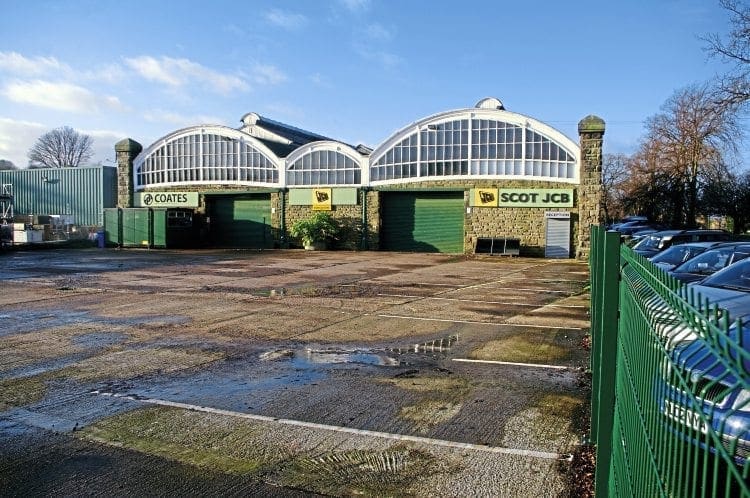
The current station at Alnmouth has changed considerably, with the station buildings and the railway cottages having been demolished a few years ago.
The station once boasted a large engine shed and a turntable, but these are long gone, and the site where they once stood is now a car park. One remnant of steam days that still survives is the large signalbox at the northern end of the platform.
Coincidentally, one of the volunteers at AVR is Ken Middlemist who, at one time, was a fireman and then a driver at Alnmouth shed when ‘J39’ and ‘K1’ class locomotives worked the services to Alnwick.
Interestingly, the locomotives at Alnmouth shed carried the 52D shed code used by the larger depot at Tweedmouth. While the distance between Alnmouth to Alnwick was only a few miles, during steam days the trains were hauled almost exclusively by tender locomotives, and there was also a turntable at Alnwick station.
In fact, Alnwick was a rather impressive stone-built station with an overall roof and a somewhat ornate design, and in its heyday was very busy. It was here two Northumbrian branch lines met the short line between Alnmouth and Alnwick, and the much longer branch, which headed north from the town through Wooler and on to Coldstream in the Scottish Borders.
The new branch joined the Berwick to Kelso line at Cornhill, a village on the south bank of the River Tweed, while Coldstream itself was on the other side of the river in Scotland. The station had originally been named Cornhill, but was renamed Coldstream in 1873.
The branch northwards was completed in 1887 and the first passenger train was hauled by Fletcher ‘BTP’ 0-4-4T No. 199, hauling several four-wheel coaches. The inaugural train left Coldstream at 6.38am on September 5, 1887 and duly arrived at Alnwick station, which was also officially opened during a ceremony held the same day.
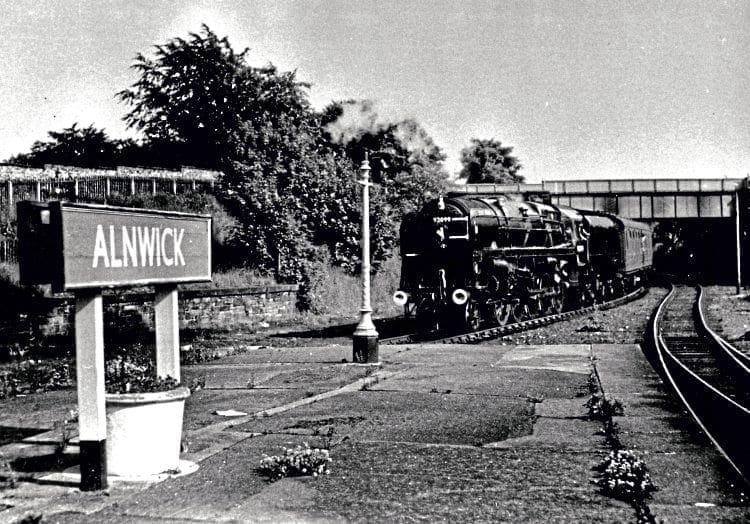
KEN MIDDLEMIST COLLECTION
Closure
The construction of the line had been an engineering challenge involving the construction of 10 stations, the building of a five-arch viaduct and blasting cuttings, and a 350-yard tunnel through solid rock.
Unfortunately, this effort went unrewarded as the line was never a commercial success, the potential of passenger and freight traffic having been wildly over optimistic.
Passenger traffic actually peaked in 1890, and for the next 30 years traffic slowly declined, and by the 1920s the local population preferred to travel on the new bus services.
The line was worked mainly by North Eastern Railway tender locomotives, including classes ‘38’, ‘59’, ‘PA’, ‘P3’, ‘Q’ and ‘R’, however ‘BTP’, ‘A’, ‘B’ and ‘U’ class tank engines were also used on some workings.
During the Second World War the line was operated by North British Class ‘J35’, ‘J36’ and ‘J37’ 0-6-0s from Tweedmouth depot, while from the 1950s BR ‘2MT’ types were used.
It was the Second World War that had revived the line, which back in 1930 had been classified as freight-only, with passenger services removed. With the building of an RAF fighter station at Milfield in 1939 the line was used to move military freight and equipment.
After Grouping, the LNER considered the immediate closure of the line, but the decision was taken to continue the operation of freight services. On August 21, 1948, during a severe storm, the railway bridge between Mindrum and Wooler was washed away, cutting the line in two.

Once again closure was considered, but the line remained in use, with trains to Mindrum starting at Coldstream, while from Wooler the rest of the line was served by trains from Alnwick. More flooding in 1949 took out a bridge south of Wooler, leaving the town isolated in terms of a railway service.
The earlier damage to the line was repaired and Wooler linked to Coldstream once again; this section of line remained in operation until it finally closed on March 29, 1965.
The line to the south of Wooler only remained in use until March 2, 1953, when it closed, to leave only the Alnwick to Alnmouth part of the branch in operation.
Alnwick had always been a busy station and by the early 1900s more than 60 trains a day were passing through, with the 1911 timetable showing 45 trains running between Alnwick and Alnmouth. However, with the arrival of bus services, by the 1930s passenger services between the two towns had decreased to 14 trains in each direction.
Opposition
By the 1960s, attempts from BR to lower operating costs had led to the line being reduced to a single track, worked by just one locomotive from Alnmouth shed. Steam continued on the line, but the ‘J39’ and ‘K1’ classes that handled most of the services were augmented by diesel multiple units.
The announcement to close the Alnmouth-Alnwick branch was made in March 1966, with services to be withdrawn by June 6.
However, there was a great deal of local opposition, which delayed the closure, but appeals to keep the line open were unsuccessful and the consent to closure was issued on September 28, 1967.
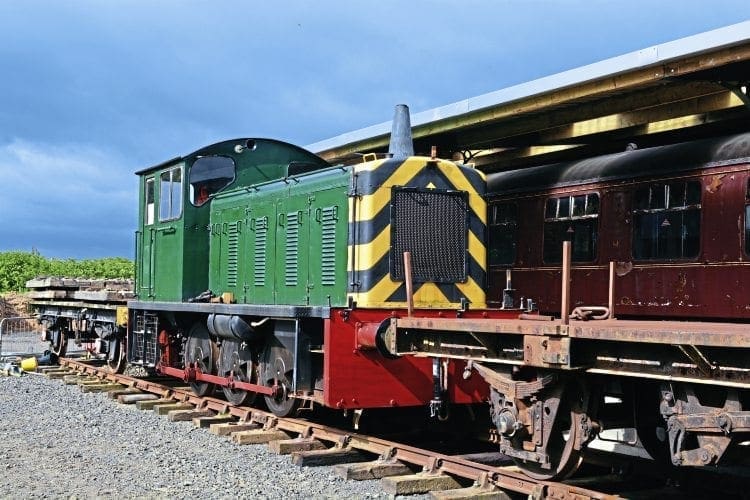
The shed at Alnmouth had been closed on June 18, 1966 and passenger services on the line ended on January 29, 1968, while a few freight services continued to operate before these, too, were suspended on October 7, 1968.
The last steam passenger service on the branch was hauled by BR ‘9F’ No. 92099, and the branch line took its place in history as the last in the North East to operate a steam-hauled passenger service.
Upon closure the Alnwick signalbox and some of the buildings at the coal depot were demolished, although some of the other buildings remained until the mid 1970s.
The stone goods shed was later dismantled and rebuilt at the Beamish museum, where it joined the weighbridge and stone office rescued from Glanton station, a few miles south of Wooler.
Interestingly, the Cornhill/Coldstream station building was the only one on the branch to have been demolished, and the others, such as Glanton, Akeld and Ilderton are now private houses.
Some traces of other railway structures have also survived, with a nice set of coal drops hidden among the undergrowth outside Glanton and the impressive goods shed at Wooler now home to an antique dealer.
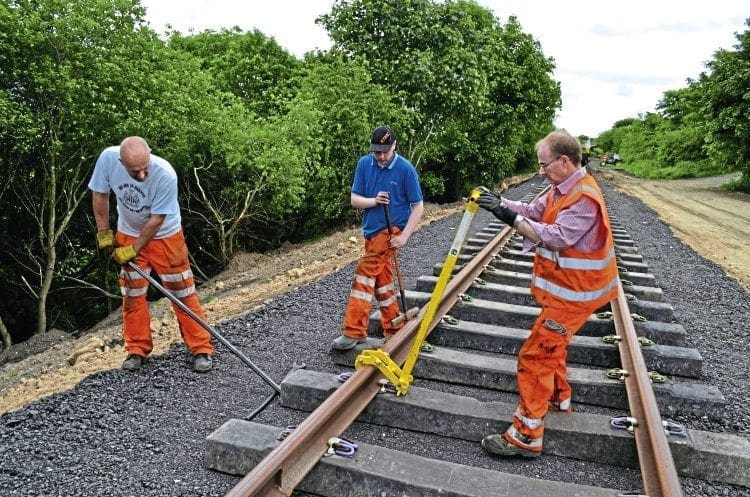
Alnwick station has survived, although there was a planning application lodged in 1993 for the property to be demolished to provide space for a new supermarket. The application was unsuccessful, and this prime example of north-eastern railway engineering can still be seen to this day.
The idea of reopening a rail link between Alnmouth and Alnwick was first put forward in 1995, with the plan receiving the unanimous support of the planning & economic development committee of Alnwick District Council.
The Aln Valley Railway Society was formed and held its first AGM in Alnwick on March 28, 1996, and later that year the society presented a feasibility study on reopening the line as a heritage railway tourist attraction.
The Aln Valley Railway Trust was formed later, and on February 25 the Aln Valley Railway was officially launched with the Duke of Northumberland (whose home is Alnwick Castle) becoming president and Alan Beith MP as vice-president.
The plans at this time did involve the reopening of Alnwick station and the construction of a new bridge over the A1 as well as the restoration of the rest of the branch into Alnmouth.
A positive start was made, and in the summer of 1997 some work on clearing the trackbed at Alnwick had started, with an application for money to the Heritage Lottery Fund and the European Regional Development Fund (ERDF) also planned.
Disappointments
Further encouragement came from the engineers, who gave Cawledge Viaduct a clean bill of health, and the news ERDF approval was received after a lengthy series of submissions.
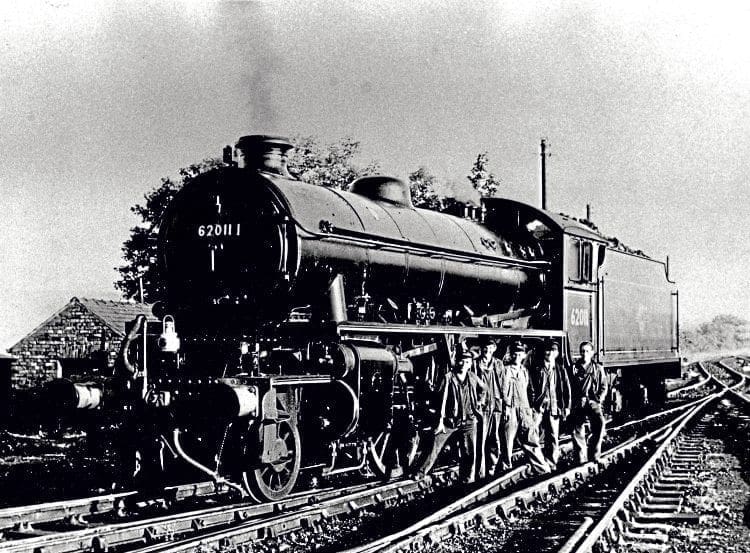
KEN MIDDLEMIST COLLECTION
Jubilation soon turned to despair as it was announced North East Regional Funding was being cut to meet an EU overspend, and in the spring of 1999 the Heritage Lottery Fund application was rejected as the Aln Valley Railway project was being classified, somewhat bizarrely, as a new development.
The society was forced to regroup, and the plans were subsequently revised, but ahead lay several years of legal wrangling, planning applications, disappointments and revisions.
The construction of a new supermarket on the site of the old station throat at Alnwick put an end to any hopes of using the station. Discussions were then held on the possibility of using a greenfield site next to the Lionheart Enterprise Park at Alnwick, and a feasibility study was prepared.
A planning application was lodged in December 2009, and at the same time it was also decided the AVR Society and the AVR Trust would be merged.
After years of hard work, and despite the numerous setbacks all those associated with the Aln Valley Railway had suffered, there was finally some good news. On July 1, 2010 the county council planning committee unanimously agreed to approve the AVR’s phase 1 planning application, although not without imposing a lengthy list of conditions.
Negotiations took place with Northumberland Estates to acquire the necessary permissions for land use and access, and on February 22, 2012 a lease was signed at Alnwick Castle, and work at the Lionheart site began.
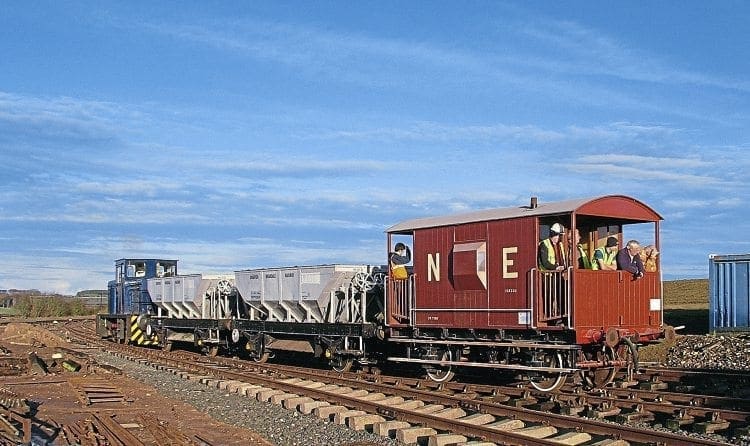
That was six years ago, and what was a grass field has seen some dramatic changes, with the emergence of the new Lionheart station, a complex of storage sidings and loco sheds. Track has been laid and the branch line is pushing towards the first section of the original track bed.
The Aln Valley Railway now regularly opens to the public and operates steam- and diesel-hauled passenger services around the station and on the short stretch of completed branch line.
Motive power is a mix of industrial locomotives and includes Andrew Barclay 0-6-0 shunter No. 615, which was used at Whittle colliery, a few miles from Alnwick. It was this loco that had the honour of hauling the first train on the AVR tracks when, on November 3, 2012, the Barclay took two ballast wagons and a NE brakevan on a tentative trip along 200 yards of track.
At the controls was driver Ken Middlemist, the former fireman and driver from Alnmouth shed, and who had also driven the diesel at Whittle colliery before it closed in 1986. It was a rather emotional occasion, not only for Ken, but also everybody else that had played a part in the struggle to get the Aln Valley Railway project up and running.
Another diesel locomotive currently in service on the line is an industrial version of the BR Class 04, which was built by Robert Stephenson & Hawthorns of Darlington in 1963 as works number 8199.
It was built for the Central Electricity Generating Board and spent all its working life at Aberthaw power station in Wales before being moved to the former Barlow Royal Ordnance depot in Yorkshire, which is now part of the Drax power station complex. Here, it was a static exhibit until donated by Drax Power Ltd to the AVR in 2009 along with two wagons.
Heritage
The first steam locomotive to run on the line was a privately owned Hudswell, Clarke 0-6-0T, built in 1917 for the Port of London Authority, and named Richboro. Although delivered to the Director of Inland Waterways and Docks, in 1926 it was sold to W Craig & Sons for use at Ifton colliery, and was eventually transferred to the National Coal Board (NCB) in 1947.
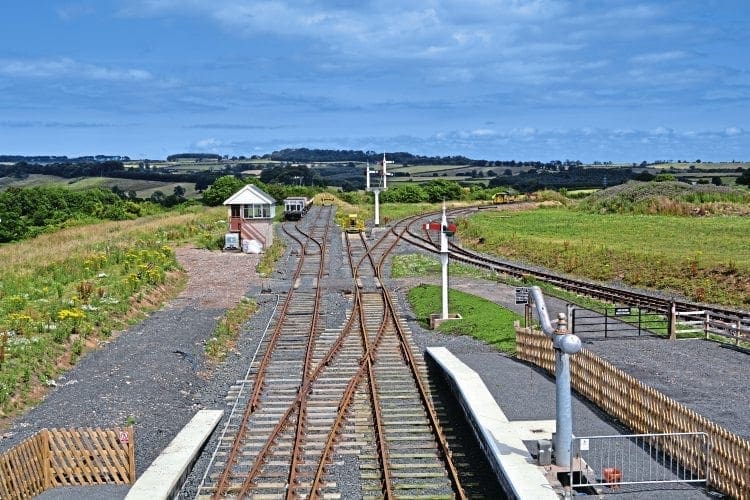
Following a period in store at Gresham colliery it was moved to Llangollen, where it was displayed outside the Dapol model railway factory.
The locomotive was sold to Mick Fairnington and brought to his engineering works in Wooler, where it was restored and later saw service on the Bo’ness & Kinneil Railway.
At the end of 2012, Richboro was brought to the AVR, and following major boiler work the Hudswell, Clarke is now regularly steamed on the railway’s open days.
As reported in The RM last month, Richboro is soon to be joined by Hunslet ‘Austerity’ 0-6-0ST No. 60, recently overhauled at the nearby works of Ian Storey in Hepscott.
The former NCB No.2 (Mid-East Durham) Area loco is owned by Stephen Wood, and later this year will be followed by classmate No. 48. A fourth steam loco, 1935-built Hawthorn Leslie 0-4-0ST Penicuik, is currently in store at Lionheart.
The AVR Society is keen to reflect the north-eastern railway heritage with structures like the new footbridge and signalbox based on NER designs. This is also evident in the various items of stock which have been moved to the site for future restoration and use on the line.
The six-wheel saloon was built by the NER in 1896 and passed to the LNER on Grouping. It was used as Tunnel Inspection Car No. E900269E and was eventually withdrawn from service by British Railways. It was moved to the Keighley & Worth Valley, and then in the mid 1970s it went to Embsay.

By 1991 the saloon was in store at Matlock before being transferred to the Tanfield Railway in 1993, where it remained until being brought to the AVR in December 2012.
As already mentioned, last year the railway achieved another milestone in this exciting project with the breakout from the station area onto the original formation.
Concrete sleepers and track have been rescued from a number of sources around the North East, including sidings at nearby Belford. Seven complete sets of points were also obtained from Thompson’s scrapyard at Stockton-on-Tees.
These were part of the yard’s own internal rail network and as well as the points more useful equipment and parts were acquired too.
Survey
Pat Murphy, AVR infrastructure manager, outlined the next phase of the work. “We have now laid track on the new embankment, which takes us from the Lionheart site down to the original trackbed on a 1-in-47½ gradient.
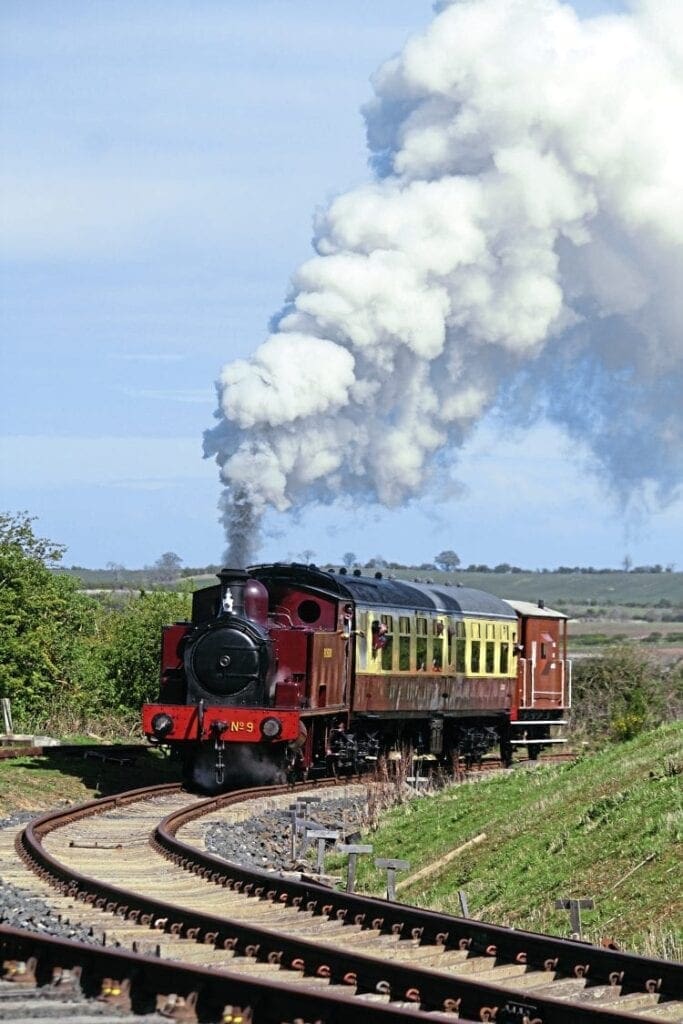
“Following grading of the trackbed from Bridge 6, we have extended the track to within 20 yards of Cawledge Viaduct and the one-mile mark.
“The fencing and three crossings between Lionheart and just beyond Bridge 6 have now been completed and the first crossing has had all the necessary signs erected. This has enabled us to run public trains down the bank to just West of Bridge 6, providing a return trip of one mile.
“Cawledge Viaduct is in need of some repairs, mainly due to water ingress, and we will be installing a waterproof membrane across the deck with suitable drainage.
“East of the viaduct the trackbed will need to be cleared and graded to Greenrigg (Bridge 3), where we will build a halt. This will provide a three-mile round trip until the line into Alnmouth is finally constructed.
“In order to proceed beyond bridge three, which carries a public road, we require a transport and works order. At present we are in discussion with Network Rail regarding access into Alnmouth station. A topographical survey has been carried out and this will enable us to design a layout which satisfies Network Rail, while providing us with a run round loop, an 85m-long platform and buildings.”
Pat continued: “While we are pressing on with the mainline we also have a plan for the continued development of the Lionheart site, which includes a two-storey, stone-built station building. The design for this has been based on a cross between the stations on the Cornhill line and at Warkworth, and features a main entrance hall, toilets, cafe, museum, education rooms and offices.
“A four-road, 48m-long carriage and wagon works, with associated facilities, is planned for the north end of the site. To reflect a North Eastern Railway terminus, a goods shed, coal drop and a Railway Inn are also included in the plan, along with a landscaped viewing area, pond and picnic area.”
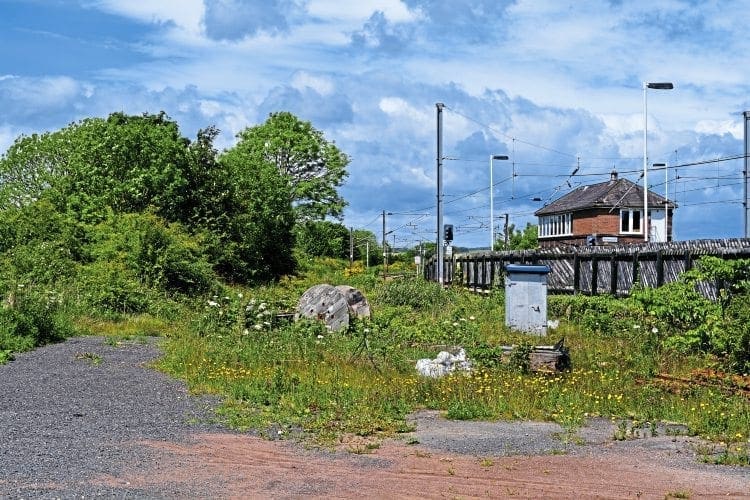
In early March this year it was announced that Northumberland County Council had applied for a grant to construct a new cycleway and footpath from next to the railway from Lionheart as far as Greenrigg Bridge.
The cycleway will form part of a safe link for cyclists and walkers from Alnwick towards Alnmouth. When completed it will open up new photo opportunities, especially on the gradient leading from the original trackbed up to Lionheart.
It may be a while before the final link at Alnmouth is completed, but it will certainly not be for want of any effort on the part of the group of volunteers who have worked hard to turn a grassy field into a railway station that looks like it has been there for years.
My thanks to the Aln Valley Railway for allowing the use of information and photographs from their archives, and for their hospitality during my visits. ■
The Railway Magazine Archive
Access to The Railway Magazine digital archive online, on your computer, tablet, and smartphone. The archive is now complete – with 123 years of back issues available, that’s 140,000 pages of your favourite rail news magazine.
The archive is available to subscribers of The Railway Magazine, and can be purchased as an add-on for just £24 per year. Existing subscribers should click the Add Archive button above, or call 01507 529529 – you will need your subscription details to hand. Follow @railwayarchive on Twitter



